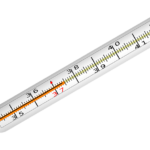The Federal Reserve reported that 40% of Americans couldn’t meet a $400 emergency expense without borrowing. A significant slice of them couldn’t pay it at all.
So, a Bloomberg economist devoted his column to deconstructing how the press and political figures, in his opinion, misused that finding.
My God.
The guy was too caught up in quibbling about how the numbers were summarized to grapple with the human story beneath the numbers.
He took comfort in the fact that only 12% couldn’t borrow $400.
Emergency borrowing
What about those who could pay $400 by borrowing?
- Where are they if another $400 emergency comes along?
- If they didn’t have $400, what has to give in their budgets to pay back the $400 that they borrowed?
Payday lenders charge an average of 400% interest for a two week loan. While touted as a vital service to low income communities without access to bank loans, payday lending is too often nothing more than financial quicksand.
Borrowing from family and friends has its own social perils. And it assumes that family and friends are better off than the borrower.
From where I sit in Silicon Valley, a huge swathe of America is living on the financial edge.
The shear cost of day to day living consumes their income and their energy. Too often expected to individually fund health care, college and retirement, they find even multiple jobs, or the gig economy doesn’t allow a financial cushion.
What a waste of economic expertise to focus on the use or misuse of numbers and not address why so many are financially vulnerable to a $400 emergency expense.






